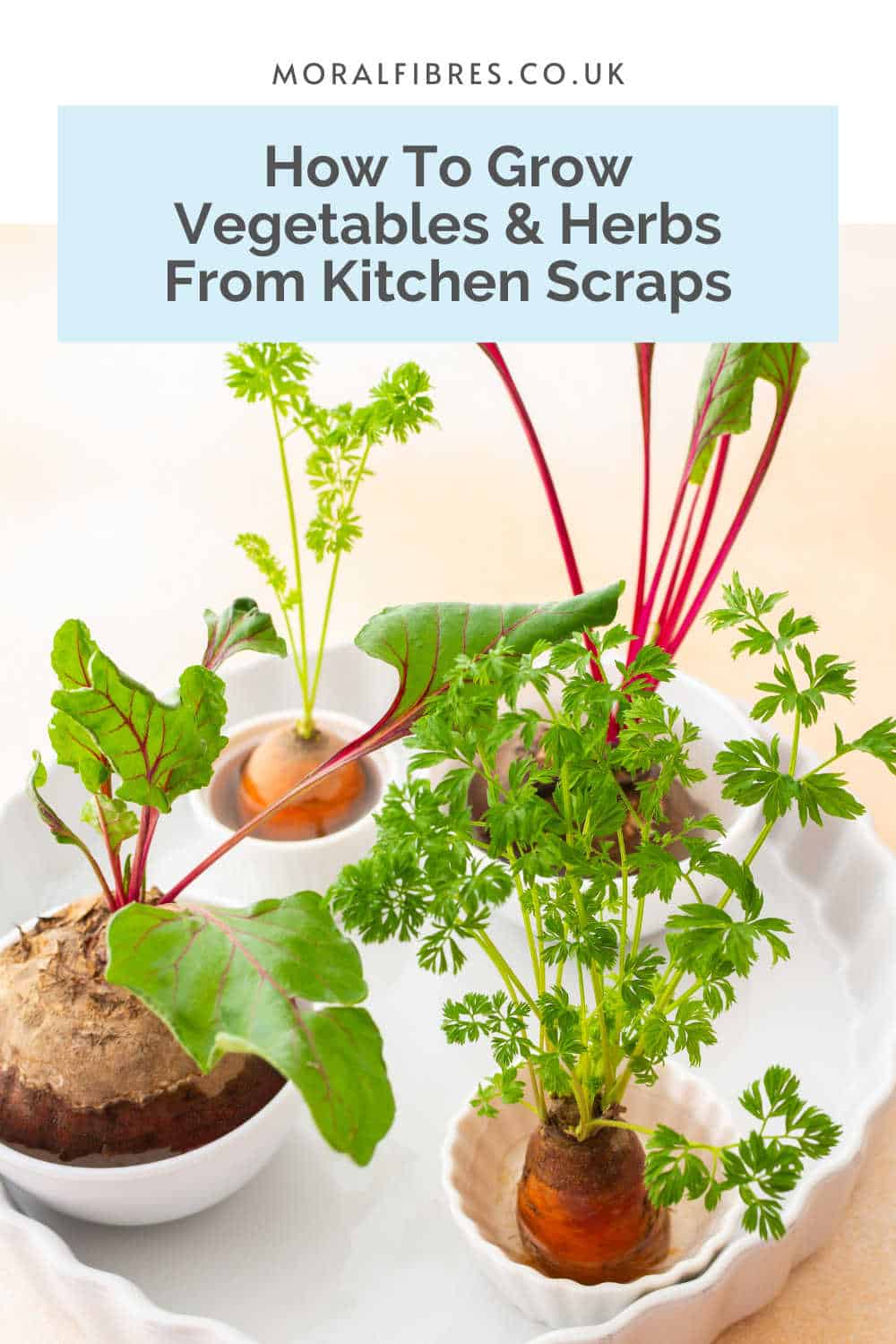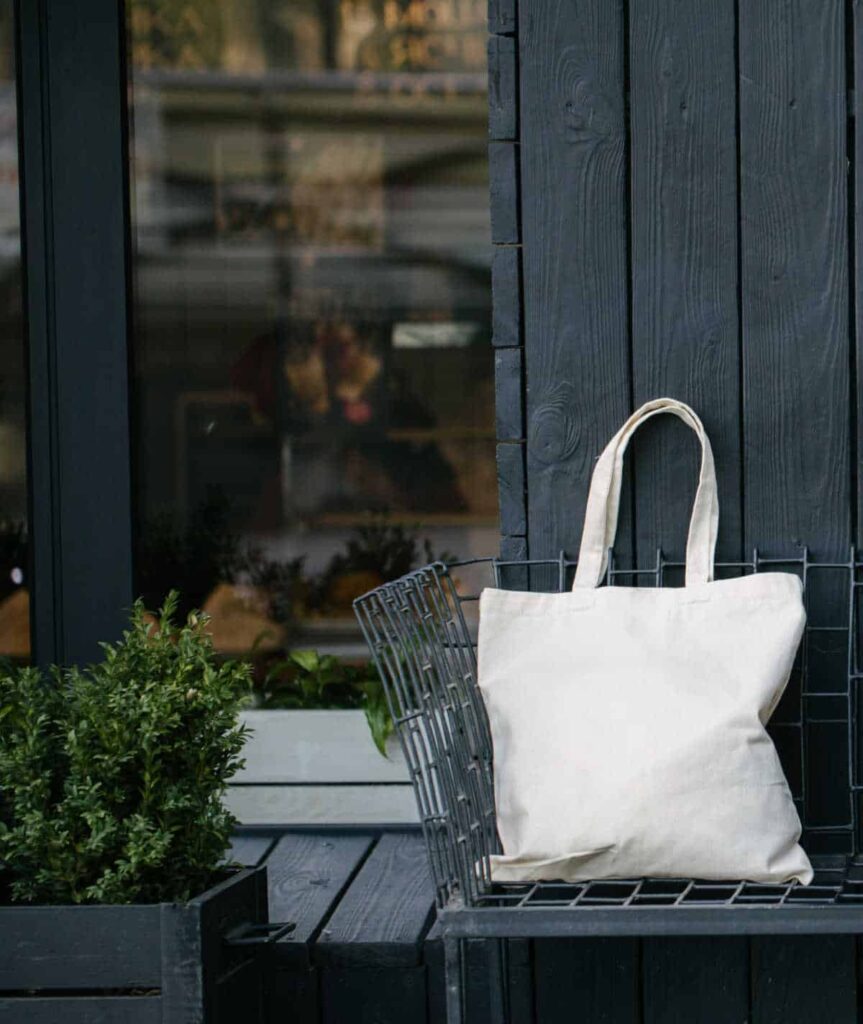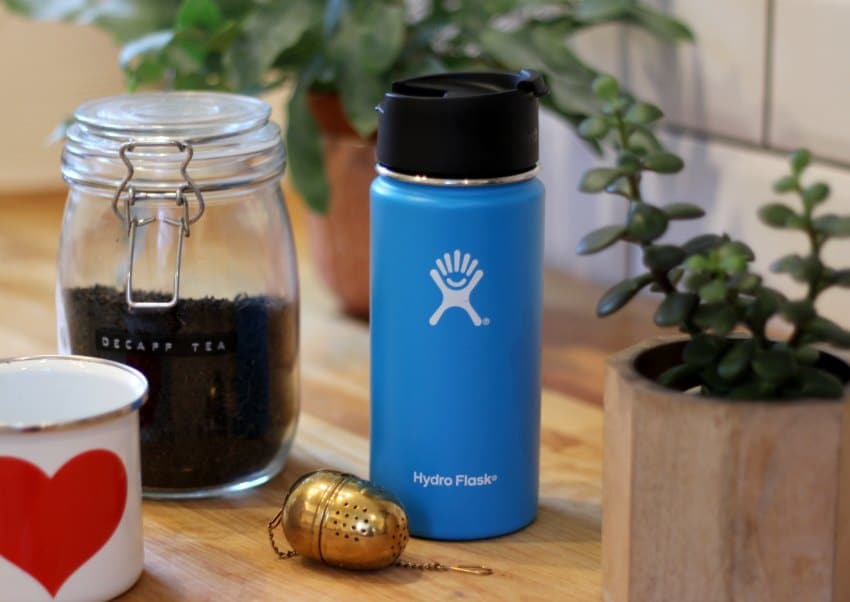The Vegetables You Can Re-Grow From Scraps
To support the running costs of Moral Fibres, this post may contain affiliate links. This means Moral Fibres may earn a small commission, at no extra cost to readers, on items purchased through these links.
Looking to save money and beat food waste? Amazingly, you can re-grow vegetables from kitchen scraps. Here’s all you need to know.
When my partner and I moved into our first flat, we were so excited as it came with its own garden. Our first garden! That initial excitement was quickly dampened by our first trip to the garden centre. Honestly, I never appreciated the cost of seeds before. I was so shocked to find that I could have very easily spent a heap of money on vegetable seeds. It costs so much money!
I realised that we needed a better and thriftier plan. So, instead, we bought a few select seeds. I then did some intense internet research, and have been re-growing some of our vegetables from our kitchen scraps. In the process, we’ve slimmed our compost bin and saved money.
The Vegetables & Herbs You Can Re-Grow From Food Scraps

It turns out that instead of composting scraps, you can re-grow vegetables from things like onion butts, the ends of leeks, the ends of lettuce, mushroom stalks, and more. So much more!
Here’s all you need to know to be a super thrifty gardener:
- Spring Onions
- Leeks
- Fennel
- Carrots
- Celery
- Cabbage
- Bok Choy
- Lettuce
- Ginger
- Onions
- Shallots
- Garlic
- Mushrooms
- Potatoes
- Sweet Potatoes
- Pineapple
Spring Onions
Spring onions are one of the easiest and fastest-growing vegetables to re-grow from scraps. Simply pop the white ends in water with the roots facing down the way – but don’t fully submerge them.
Place your pot in a warm and sunny spot and then leave them to grow. All you need to do is change the water every time it becomes cloudy. You can then chop the greens off and use them in your cooking.
Leeks
Leeks can be grown in the same way as spring onions. Simply pop the ends in water, pop it in a sunny spot. Change the water frequently, and watch your leeks grow. You can then chop the greens to use in your culinary creations, or plant it out in your garden to let it get bigger.
Fennel
Fennel is another easy one to grow again. Pop the base of the bulb – still with its roots intact – in a tub of shallow water. Change the water when it gets cloudy. You should see re-growth shortly. Once you have a few green shoots emerging, you can then plant it out in your garden.
Carrots
Rather than composting your carrot tops (the bits where the leaves grow out of) – keep them to re-grow more carrots.
All you have to do is pop the tops in a saucer of water and pop it in a sunny and warm spot. Change the water frequently, and within a few days you should see some growth. You can use carrot greens in your cooking – such as carrot top pesto – or, depending on the time of year, you can plant your carrots in your garden once they are more established.
Celery
Celery is another vegetable that you can re-grow so easily. Like spring onions and leeks, simply take the bottom of your celery and pop it in a saucer of water. Pop this in a sunny and warm spot, and change the water whenever it goes cloudy.
You can then use any celery leaves in your cooking. Or, depending on the time of year, plant it out in your garden to re-grow.
Cabbage
Chop the bottom off of your cabbage, and pop it in a saucer of water. Make sure the tops are above the water line. Replace the water frequently – whenever it goes cloudy – and mist the top part with water to keep it hydrated.
You should see signs of growth after a week. You can then plant the cabbage plant in your garden. Make sure the new leaves are above the soil – the rest should be below the soil.
Bok Choy
Grow bok choy as you would cabbage. Pop the end of it in water, and keep it hydrated. You can then harvest the leaves as they grow or pop them out in your garden for bountiful bok choy crops.
Lettuce
Lettuce is another vegetable that you can re-grow. Similar to cabbage, pop the bottom of the lettuce in water, and wait for the leaves to grow. Make sure you change the water and mist the tops.
You can plant the lettuce in your garden, or keep harvesting the leaves direct from the lettuce plant. As cut and come-again plants, they’ll keep growing back.
Ginger
If you have a chunk of ginger left over from cooking, you can re-grow it into a new ginger plant. Simply soak it in a cup of water overnight, and then plant it in a pot of 50/50 compost and soil. Place in a warm and sunny spot and water frequently. It takes about a year, but you’ll then have a ginger plant that you can keep or harvest the roots for cooking.
Onions
The next time you are cooking onions, take the end with the roots and pop it into a saucer of water. Change the water frequently, and you’ll soon see green shoots growing up.
Depending on the time of year, you can plant these out in your garden or in pots on a sunny windowsill. It’s a super thrifty way to get a crop of new onions.
Shallots
Re-grow shallots in much the same way as you would onions – they are part of the same allium family after all. Pop the ends in water, and you’ll soon see some re-growth. You can then plant these out in your garden once they are established.
Garlic
If you have a clove going spare, then you can use it to re-grow garlic bulbs. Pop it in a pot containing a 50/50 mix of soil and compost, and place it in a sunny and warm spot. Water it well. Your bulb is then ready to harvest when the leaves start to turn yellow.
It can take a little while – as much as 9 months. To save your kitchen from being inundated with pots, you can plant them out in your garden.
Mushrooms
Edible mushrooms can easily be re-grown from scraps. Simply take a pot and add a 50/50 mix of compost and soil. Plant the stalk straight into the soil, leaving the surface of the stalk exposed slightly. Lightly water so the soil is moist but not wet, before placing the pot in a warm spot away from direct sunlight. You can then wait to see if the stalk produces mushrooms – this should happen within two weeks.
Potatoes
Potatoes are another easy vegetable to re-grow. The next time you’re peeling potatoes, keep a look out for any chunky bits of peel that include two ‘eyes’ on them. Potato eyes are sprouts that look like small reddish-white bumps, which occur when the potato is ready to begin growing new potatoes.
Let the chunk dry out for a day or two, before planting it straight into the ground – at a depth of around 10 cm. Water it and add soil as required and you will be rewarded with a crop of potatoes later on in the year.
Do bear in mind that potatoes are best planted in March, so save this one for the spring.
Sweet Potatoes
Sweet potatoes can be grown in the same way as standard potatoes. Just store your sweet potatoes in a warm dry spot after picking them, to allow them to develop that nice sweet flavour that they are famous for.
Pineapple
The next time you are preparing fresh pineapple, consider trying to re-grow it! Yup, don’t bin the green leafy top. Instead, remove as much fruit as possible from the underside, and then remove as many bottom layers as possible until you see root buds. These are very small and brown.
Next, remove any lower leaves, and then sit the pineapple top in a warm dry spot for a couple of days. Drying it out helps to stop it from rotting.
Plant it in a pot with a 50/50 mix of compost and soil, ensuring the soil comes up to just below the leaf base. Water and place in a warm and bright spot ( a greenhouse or polytunnel is ideal).
The yield isn’t very high – it takes 2 to 3 years to grow a pineapple, and one plant only bears one fruit. This isn’t the best task if you like quick wins!
What vegetables do you plan on growing from kitchen scraps? And looking for more clever gardening tips? Here’s how to compost in a flat, if you live in a small space.
Found this post useful? Please consider buying me a virtual coffee to help support the site’s running costs.





Thank you! I was looking to see if I could grow pea shoots without compost – I love that I can use cotton wool and cold tea! Then I found all the other tips. I will be trying one or two…….
Brilliant Sue, so glad I could help! Good luck with the growing!
I was only searching when pea shoots are ready to eat, and hey presto, found all the other wonderful things I am able to grow at home; not necessarily to save money but to be get intrigued with the process of life cycle of what nourishes me :)